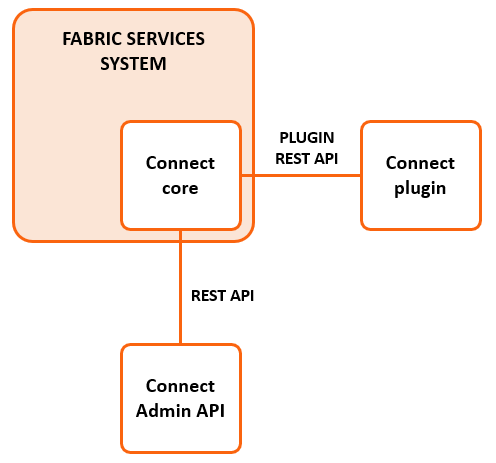Introduction
The Fabric Services System Connect solution (or "Connect") acts as a bridge between the Fabric Services System and different cloud environments.
Connect is aware of the different processes and workloads running on the servers that make up the cloud environment, while at the same time being aware of the fabric as configured on the Fabric Services System itself.
This enables Connect to configure the fabric dynamically based on workloads coming and going on the cloud platform. It does this by inspecting the cloud itself and learning the compute server, network interface and VLAN on which a specific workload is scheduled. By also learning the topology through the LLDP information arriving in the fabric switches, it connects those two information sources.
Components
The Connect solution is built on a modular platform to better support virtually any cloud environment. It is divided into two main components:
- the Connect service
- Connect plugins
The Connect service is a microservice with a REST API running inside the Fabric Services System environment. It is responsible for learning, through LLDP, how the cloud compute servers are connected to the fabric. It is also responsible for configuring the fabric for the different workloads of the cloud environment.
Connect plugins are responsible for learning on which compute servers and networks the various workloads in the cloud environment are scheduled, and passing that information to the Connect service.
This design allows plugins to be simple, handling only the integration with the cloud environment. All complexity pertaining to the fabric is hidden and centralized in Connect.

Connect overview
Connect is the component responsible for translating information that originates from plugins about cloud computes into information relating to the fabric.
Plugins overview
Connect plugins are specifically made to inspect one type of cloud environment. While these plugins can be developed specifically targeting a custom cloud environment, Connect comes with three Nokia supported plugins:
- the Connect Kubernetes Plugin
- the Connect OpenStack Plugin
- the Connect VMware Plugin
Feature overview
Connect supports the following features:
- Creating Layer 2 workload intents and workload subnets on the Fabric Services System (translating these to Tenant and Subnet in the Connect REST API).
- Automatically discovering the cloud compute resources from the fabric using LLDP.
- Automatically resolving inconsistent states between Connect and the fabric by performing an audit between Connect and the Fabric Services System.
- Using pre-existing LAGs in the fabric.
- Using the cloud management's standard network management tools to manage the fabric transparently.
- Using workloads managed by the Fabric Services System; this is the case in which an operator provisions a workload intent and workload subnets in the Fabric Services System before adding them to Connect through a tenant and subnet.